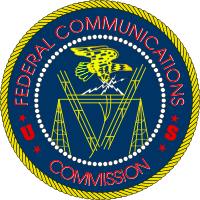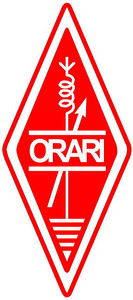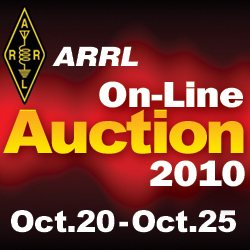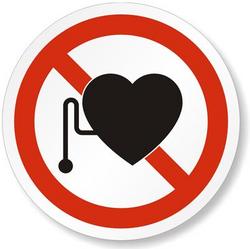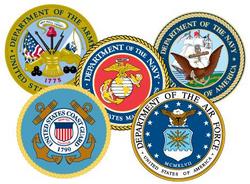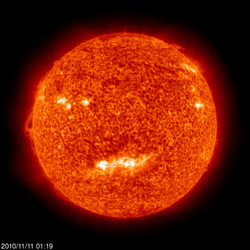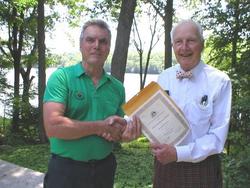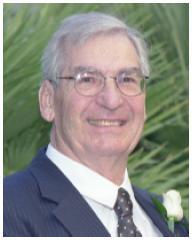 November 11, 2010 John E. Ross, KD8IDJ, Editor
| ||||||||||
+ Available on ARRL Audio News + FCC News: FCC Issues Report and Order on Vanity and Club Station Call Signs
In November 2009, the FCC issued a Notice of Proposed Rule Making (NPRM) -- WT Docket No. 09-209 -- seeking to amend the Commission's Amateur Radio Service rules to clarify and codify existing procedures governing the vanity call sign system. The NPRM also sought to revise certain rules applicable to club stations. The ARRL submitted its comments to the FCC on March 26. On Monday, November 8, 2010, the FCC issued a Report and Order with its decisions. These new rules will take effect 60 days after publication in the Federal Register. In the Report and Order, the FCC amended and clarified its rules with respect to Amateur Service vanity call signs "in order to promote processes that are more equitable and administratively efficient." The FCC has amended its vanity call sign rules to clarify the date on which the call sign associated with a license that is canceled due to the licensee's death becomes available for reassignment. The R&O also clarifies the exceptions to the general rule that a call sign is unavailable to the vanity call sign system for two years after the license terminates. As for club stations, the FCC has placed limits on who can file applications on behalf of a club, how many vanity call signs a club can hold and how many clubs can have the same license trustee. Read more here. + Public Service: Indonesian Hams Continue to Support Communications as Volcano Stays Active
As the dual natural disasters of an erupting volcano and the aftermath of a tsunami continue in Indonesia, the Organisasi Amatir Radio Indonesia (ORARI) -- that country's IARU Member-Society -- continues to provide communication support to relief and government agencies. According to ORARI International Affairs Coordinator Wisnu Widjaja, YB0AZ, ORARI members are still working in the field at the site of the Mount Merapi eruption and the Mentawai tsunami: "We are working on the 2 meter band and on HF at 7.065 MHz." He asked that the 40 meter frequency and the IARU Region 3 Emergency Center of Activity Frequencies be kept clear from regular use. These frequencies are 3.600, 7.110, 14.300, 18.160 and 21.360 MHz . Read more here. The ARRL On-Line Auction: Going Once, Going Twice, GONE!
With almost 200 items up for bid -- and almost 1000 bids placed -- the Fifth Annual ARRL On-Line Auction closed on October 25 with winning bids on every auction item. ARRL Business Services Manager Deb Jahnke, K1DAJ, said that she was happy with the responses the Auction received during its run. The generosity of many donors, Jahnke says, made it possible for the Auction to offer a diverse list of items that included transceivers, ARRL Lab-tested and reviewed equipment, vintage gear, one-of-a-kind treasures, mystery "junque" boxes and more. Read more here. + The Doctor Is IN: Pacemakers and RF Schley Cox, W4AMW, of Owensboro, Kentucky, told the Doctor that he's headed to see the cardiologist next week about a pacemaker. He's already started researching their use around RF and says he is happy to go all low power (QRP), if that's what's called for. Schley mentioned that he might also be able to operate his rig remotely -- perhaps 20 feet away, but he needs to know how to measure stray RF in the shack itself. Here's what the Doctor had to say:
I haven't received actual reports of any pacemaker problems and that seems to go along with the info on the ARRL Web site. Note that there are no power levels (or field strength) limits noted there, nor have I found any on manufacturers' Web sites. Thus knowing the actual field strength level in the station may not help. If it were me, I would start by talking to my physician. She won't be able to give you power limits, but perhaps could indicate symptoms to watch for while on the air so you could take appropriate action quickly if called for. I would start with a careful RF safety evaluation, as required by the FCC anyway. While the FCC guidelines were not based on pacemaker interference, they should result in a reasonably safe environment. If your station is properly set up -- without common mode feed line current, for example -- most radiation should surround the antenna and there should not be much RF within the shack. Calibrated RF field strength meters are available, but are quite expensive. Relative measurement is pretty easy -- look at any recent ARRL Handbook. If you had a simple field strength meter running at all times in the station (I'm thinking the diode and microampmeter type that doesn't require power), you could see if anything changed, and diagnose and repair as needed. Thanks Doctor! Do you have a question or a problem? Send your questions via e-mail or to "The Doctor," ARRL, 225 Main St, Newington, CT 06111 (no phone calls, please). Look for "The Doctor Is IN" every month in QST, the official journal of the ARRL. + On the Air: W1AW Announces Winter Operating Schedule With the switch from Daylight Saving Time to Standard Time, W1AW Station Manager Joe Carcia, NJ1Q, has updated the W1AW operating schedule to reflect the change. The standard times have not changed, but the UTC times have. Read more here. + ARRL Says "Thank You" to Veterans On Thursday, November 11, here in the US and abroad, we celebrate Veterans Day, also called Remembrance Day or Armistice Day. Originally a holiday that marked the end of World War I -- the "War to End All Wars" -- this day has been set aside to honor all who have served their country. It was on November 11, 1918, on the 11th hour of the 11th day of the 11th month, that Germany signed the Armistice, formally ending the hostilities that had been ongoing since 1914.
The ARRL would like to take this opportunity to thank our service veterans. Whether they served on active duty or reserve, during peace time or time of conflict, they served their county with honor. We also would be remiss if we did not remember the families of those veterans who kept the homefires burning bright; without their love and support, our veterans would have indeed been alone. ARRL Headquarters has its share of service veterans: Contributing Editor Al Brogdon, W1AB (Army); Publications Sales Associate Mark Dzamba, KB1FMY (Air Force); Assistant VEC Manager Perry Green, WY1O (Army); Technical Editor Joel Hallas, W1ZR (Army); News Editor S. Khrystyne Keane, K1SFA (Coast Guard); DXCC Manager Bill Moore, NC1L (Army); Reprints Specialist Tony Nesta, AA1RZ (Navy); Membership and Volunteer Programs Manager Dave Patton, NN1N (Navy); Technical Relations Specialist Jon Siverling, WB3ERA (Army); Field and Regulatory Correspondent Chuck Skolaut, K0BOG (Air Force); Education & Technology Program Coordinator Mark Spencer, WA8SME (Air Force), and Archivist Perry Williams, W1UED (Air Force). Thank you for your service -- your sacrifice and the sacrifice of your fellow service members is not forgotten. + Section News: New Section Manager Appointed in Western New York
Steve Ryan, N2ITF, of Ashville, New York, has been appointed Section Manager of the ARRL Western New York Section, effective November 2. ARRL Membership and Volunteer Programs Manager Dave Patton, NN1N, made the appointment in consultation with Atlantic Division Director Bill Edgar, N3LLR, after Scott Bauer, W2LC, announced his resignation for personal reasons on October 31. Bauer had served as Section Manager since January 2000. Read more here. Solar Update
Tad "Now I believe the Sun is gonna shine" Cook, K7RA, reports: The average daily sunspot numbers and solar flux increased over the past week, with sunspot numbers up 7.4 points to 33.1, and solar flux up 2.1 points to 84.2. Four new sunspot groups have appeared since November 4. The latest forecast shows predicted solar flux at 86 on November 11-12, 85 on November 13, 83 on November 14-18 and 85 on November 19-25. The predicted planetary A index for the next week is 5. Last year, Steve Nichols, G0KYA, wrote the bulletin for us on October 30, and he has just published a free online book -- Understanding LF and HF Propagation -- with G3NYK. You can download it from Steve's blog. Look for more information on the ARRL Web site on Friday, November 12. For more information concerning radio propagation, visit the ARRL Technical Information Service Propagation page. This week's "Tad Cookism" is brought to you by The Eagles' No More Cloudy Days. + Silent Key: John W. Soderberg, W1AKV (SK)
John Soderberg, W1AKV, of Weston, Vermont, passed away on November 7. He was 90. Soderberg, an ARRL member, was one of the inventors of the spherical array and its associated electromechanical compensator that was the primary acoustic (sonar) sensor subsystem on three generations of Navy nuclear attack and fleet ballistic submarines. He was also a key member of the Underwater Sound Laboratory (USL) engineering team that developed sonar and related systems for the submarines. According to friends, he was walking the hills for miles with his German shepherd and working CW just days before his death. + Silent Key: Milton A. Sullivan Jr, ex-K8YDO, Former Chief Engineer at R. L. Drake (SK)
Milton A. "Buddy" Sullivan Jr, ex-K8YDO, of Washington, DC -- the former chief engineer at the R. L. Drake Company -- passed away from a stroke on October 28. He was 85. Sullivan designed and oversaw the designs of all the most significant Drake Amateur Radio products, including the 1A, 2B and 2NT transmitter, all the 4 lines and the beginning of the 7 line. After retiring from Drake in 1984, Sullivan ran his own business selling and setting up satellite television systems, an offshoot of his later projects at Drake that involved designing satellite equipment. After that, he went back to work full time as chief engineer for Lytton Electronics, where he worked until his final retirement in 1990. In 1993, he and his wife Judith moved to South Carolina where Sullivan worked for Alpha Delta, the small company owned by his former Drake colleague and long time friend, Don Tyrrell, W8AD. Sullivan donated his body to science. A US Navy veteran, he will be interred at Arlington National Cemetery after a term with the Georgetown University Medical School. -- Thanks to John Sullivan and Don Tyrrell, W8AD, for the information This Week on the Radio This week:
Next week:
All dates, unless otherwise stated, are UTC. See the ARRL Contest Branch page, the ARRL Contest Update and the WA7BNM Contest Calendar for more info. Looking for a Special Event station? Be sure to check out the ARRL Special Events Station Web page. Upcoming ARRL Section, State and Division Conventions and Events
To find a hamfest near you, click here. ARRL -- Your One-Stop Resource for Amateur Radio News and Information
Click here to advertise in this newsletter. | ||||||||||
